
Manufacturing and Quality Control: Engineer Jorge Aguila
Recently I had an opportunity to talk with Jorge Aguila – Senior Manufacturing Engineer at Strymon. Jorge is a man who wears many hats! In
Free US Shipping On Orders Over $49
Easy 30-Day Returns
Financing Available Through ![]()
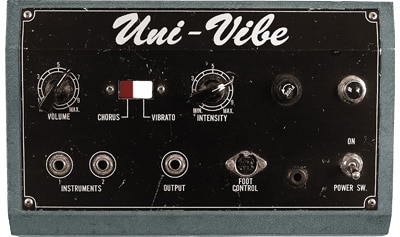 What was the original Uni-Vibe exactly? A vibrato pedal? Leslie simulator? Chorus? Phaser? Well, yes and no, sort of?
What was the original Uni-Vibe exactly? A vibrato pedal? Leslie simulator? Chorus? Phaser? Well, yes and no, sort of?
To hear a beautiful example of the Uni-Vibe in action, listen to David Gilmour’s guitar on Pink Floyd’s “Breathe.” The effect was also famously used by Jimi Hendrix on “Machine Gun” from Band of Gypsys, as well as by Robin Trower on “Bridge of Sighs.”
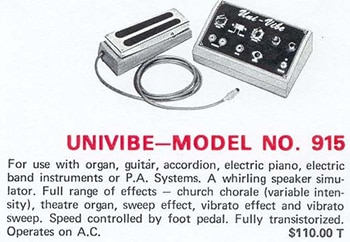 The original Uni-Vibe pedal was created by the Japanese guitar effects company Shin-ei in the 1960s. Though the original designer Fumio Mieda reportedly said his inspiration came from the sound of shortwave radio signals being affected by atmospheric modulation, the Uni-Vibe is more commonly regarded as having been created as an attempt at emulating the sound of a rotating Leslie speaker. Although you’re not likely to mistake the sound of a Uni-Vibe for a Leslie, it can produce some wonderful effects.
The original Uni-Vibe pedal was created by the Japanese guitar effects company Shin-ei in the 1960s. Though the original designer Fumio Mieda reportedly said his inspiration came from the sound of shortwave radio signals being affected by atmospheric modulation, the Uni-Vibe is more commonly regarded as having been created as an attempt at emulating the sound of a rotating Leslie speaker. Although you’re not likely to mistake the sound of a Uni-Vibe for a Leslie, it can produce some wonderful effects.
So why is it so hard to pin down exactly what this effect is? The original pedal had a Chorus/Vibrato selector switch, and to this day you may see the pedal referred to as a chorus/vibrato pedal. However, it doesn’t really sound like a chorus pedal. Internally, a series of staggered phasing filters were used. These filters were modulated by light dependent resistors responding to a light bulb whose voltage was varied by an LFO (low frequency oscillator). In Chorus mode, the dry signal is mixed with the phase-shifted signal, producing the unique asymmetrical phase shifting sounds the pedal is most known for. In Vibrato mode, there is no dry signal present, resulting in a throbbing pitch bend (vibrato) effect.
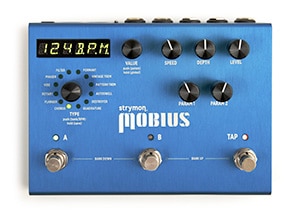 If you want to evoke these sonic textures in your own music, you can easily dial them in with our Mobius Modulation pedal. Set the Mod Machine Type to Vibe, and you’re ready to go. Just like on the original, you can select between Chorus and Vibrato modes, vary the speed and depth, and adjust output level. Additional controls not found on the original effect: a Headroom parameter allows you to dial in some dirt reminiscent of the transistors used in the original analog design (by turning the parameter down) or stay clean at high headroom settings. You can also alter the waveform of the LFO with the Waveshape parameter, and choose how much bass you’d like present in your sound with the Low End Contour setting.
If you want to evoke these sonic textures in your own music, you can easily dial them in with our Mobius Modulation pedal. Set the Mod Machine Type to Vibe, and you’re ready to go. Just like on the original, you can select between Chorus and Vibrato modes, vary the speed and depth, and adjust output level. Additional controls not found on the original effect: a Headroom parameter allows you to dial in some dirt reminiscent of the transistors used in the original analog design (by turning the parameter down) or stay clean at high headroom settings. You can also alter the waveform of the LFO with the Waveshape parameter, and choose how much bass you’d like present in your sound with the Low End Contour setting.
Take a listen to some Mobius Vibe audio examples below, and learn more about Mobius here. 🙂
*All product names used in this article are trademarks of their respective owners, which are in no way associated or affiliated with Strymon or Damage Control Engineering, LLC.
Subscribe to our newsletter to be the first to hear about new Strymon products, artist features, and behind the scenes content!

Recently I had an opportunity to talk with Jorge Aguila – Senior Manufacturing Engineer at Strymon. Jorge is a man who wears many hats! In
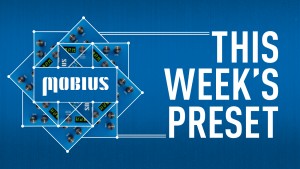
Classic through zero or ‘tape deck’ flanging is showcased here, utilizing the Mobius Flanger machine on the Zero+ mode. By using a distortion pedal before
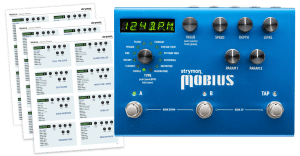
Hi Mobius users—many of you have asked us to put together a detailed list of the Mobius factory preset settings. Here is a PDF
2 Responses
The Mobius offers a great Univibe. I use the following settings for an authentic sound:
Mode: chorus
Lo end: in the middle
Wave shape: almost all to the left
Depth: 3 o’clock
Headroom: 3/4
[…] A vintage Uni-Vibe, the pedal that blurred the lines between chorus and vibrato while trying to achieve the effect of moving speaker cabinets. […]